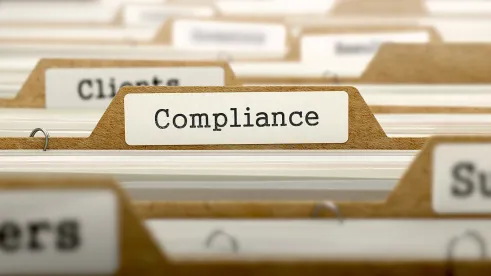The CTA applies broadly to US companies and non-US companies with a presence in the United States, with exemptions (described below) for larger companies and certain categories of regulated entities. A company subject to the CTA must disclose to FinCEN certain information about itself, the identity of its ultimate beneficial owners and individuals who exercise substantial control over the company, and details about certain individuals involved in its formation.
For companies subject to the CTA:
- Entities formed or registered to do business in the United States before January 1, 2024, must file their initial reports by January 1, 2025.
- Entities formed or registered during 2024 must file their initial reports within 90 calendar days of registration or formation.
- Entities formed or registered on or after January 1, 2025, must file their initial reports within 30 days of registration or formation.
If previously reported information changes or if the reporting company identifies an error, the reporting company must file an updated report within 30 days. FinCEN has set up a portal at https://www.fincen.gov/boi for making filings and with information about the CTA.
Several corporate structures that are common for non-US corporations doing business in the United States could trigger reporting requirements under the CTA (or at least require closer scrutiny for CTA compliance purposes). Those structures include, among others:
- Holding or “blocker” corporations, formed for the purpose of holding an investment in a US entity, but not engaging in other significant operations or having employees.
- Companies conducting business in the United States with 20 or fewer employees.
- Joint venture entities where many or most employees are seconded to the venture by the joint venture partners and are not employees of the joint venture.
- Inactive subsidiaries.
The filing requirements are not onerous in many cases but do require continuous compliance. Failure to comply with mandated CTA filing requirements can result in penalties not only for the entity, but also for its senior officers and other individuals who caused the company to fail to file a report or to report incomplete or inaccurate information. Accordingly, non-US companies should review their US operations promptly to determine whether there are compliance obligations under the CTA, and, if yes, to determine the steps they will take to comply. Because the CTA reporting obligations are continuous, companies should consider implementing compliance strategies, including potentially adding provisions addressing the CTA to agreements and entity governing documents as appropriate.
Below, we discuss the CTA in greater detail and highlight certain issues likely to be of particular interest to non-US companies with US operations. This alert is not a full summary of the CTA.
Overview
What companies are exempted from reporting? What are the key exemption categories?
As a default position, any company formed by a filing with a US state or similar governmental authority (or that is a non-US company registered with such an authority) is a reporting company under the CTA, unless an exemption from reporting is available. This includes corporations, limited liability companies, limited partnerships, and statutory business trusts, among other entity types.
There are 23 statutory exemptions from the definition of a “reporting company.” Most of the exemptions apply to entity types that are regulated companies, particularly those in the financial sector. Of the various exemptions, the following may be of particular interest to non-US companies operating in the United States:
Public Company Exemption
This exemption applies to companies whose securities are publicly traded in the United States. This exemption does not apply to companies with securities that are traded on non-US exchanges and not registered in the United States. Therefore, companies that trade exclusively on a non-US exchange are not automatically exempt.
Large Operating Company Exemption
This exemption applies to a company that satisfies all three of the following conditions:
- it employs at least 21 full-time employees in the United States;
- it has an operating presence at a physical office within the United States; and
- it has filed a US federal income tax or information return for the previous year showing more than $5 million in US-sourced gross receipts or sales (net of returns and allowances).
There are special rules for ascertaining the number of full-time employees and for calculating gross receipts, and counsel should be consulted to determine if they apply.
Regulated Entities
The CTA exempts from compliance many types of entities that are already regulated in the United States, such as certain banks, credit unions, bank holding companies, savings and loan holding companies, money transmitter businesses, registered brokers and dealers in securities, registered investment companies and investment advisers, insurance companies, Commodity Exchange Act registered entities, regulated public utilities, and pooled investment vehicles, among other categories of companies. Counsel should be consulted to confirm whether any such exemption is available to a particular business.
Exemption for Subsidiaries of CTA-Exempt Companies
Any entity the ownership interests in which are “controlled or wholly owned, directly or indirectly,” by one or more CTA-exempt companies is itself exempt from the CTA (other than subsidiaries of money services businesses, pooled investment vehicles, entities assisting tax-exempt organizations, and inactive entities).
What are some situations that may create CTA compliance obligations?
US Blocker or Holding Company
In a commonly seen structure, some of our non-US clients own a US holding company, which in turn owns one or more US operating subsidiaries. The US holding company may have few (or no) employees and few assets aside from its investments in its US operating subsidiaries. In many such cases, the US holding company may be a reporting company under the CTA, even if one or more of its subsidiaries might be exempt, for example, as a large operating company or an exempt regulated entity. Unlike the subsidiary exemption from the CTA (where a subsidiary of a CTA-exempt company is often exempt), there is no equivalent exemption in the upward direction for the parent of an exempt entity.
US Operating Company
Some of our non-US clients operate in the United States through an operating subsidiary with a small number of employees, for example, in sales or business development. In such a case, the US subsidiary is likely to be a reporting company unless it satisfies the large operating company exemption or is otherwise exempt under the CTA.
Joint Venture Company
Many of our non-US clients invest in US joint ventures. These joint ventures often are structured as corporations or limited liability companies and therefore could be reporting companies. Some joint ventures might satisfy the large operating company exemption. Others might not satisfy that exemption but could still be exempt if they are exempt regulated entities or are controlled or wholly owned by CTA-exempt entities. This can be the case even if no single investor owns a majority stake in the venture.
Inactive Subsidiary
A non-US company needs to be mindful of any inactive entities that it may own, directly or indirectly, in the United States. The CTA exemption for inactive entities is narrow and does not apply to entities that are owned by a foreign person, whether directly or indirectly, wholly or in part. Of course, the inactive subsidiary might still be exempt from the CTA if it satisfies another statutory exemption.
Whom must a company report to FinCEN?
A reporting company must report two categories of individuals to FinCEN: “beneficial owners” and “company applicants.”
A “beneficial owner” is “any individual who, directly or indirectly, either exercises substantial control over such reporting company or owns or controls at least 25% of the ownership interests of such reporting company.” The CTA mandates that the reporting company look through as many tiers of entities as is needed to identify its ultimate beneficial owners. In addition to actual owners of a company, “beneficial owner” is defined to include senior officers of a company (its president, chief financial officer, general counsel, chief executive officer, chief operating officer, or any other officer who performs a similar function (regardless of official title), such as a manager of a limited liability company) and certain other individuals who have sufficient direct or indirect authority over the company.
A “company applicant” is one of up to two individuals: first, the person who directly files the document creating or registering the entity, and second, the person (if different from the first) who is primarily responsible for directing or controlling that filing.
What must a reporting company disclose to FinCEN?
Each reporting company must disclose in its initial report:
- its full legal name;
- its trade name or “doing business as” name;
- its current address (including the US street address of its principal place of business);
- its jurisdiction of formation (and, for a foreign reporting company, the state or Tribal jurisdiction where it first registered to do business); and
- its IRS taxpayer identification number (which generally is its employer identification number (EIN)).
The reporting company must also disclose its beneficial owners and company applicants, subject to special rules in certain cases. For each beneficial owner and company applicant, the reporting company generally must disclose:
- the full legal name of the individual;
- the individual’s date of birth;
- the individual’s residential street address (or, for a company applicant, the applicant’s business address);
- a unique identifying number and the issuing jurisdiction from
- a non-expired passport issued by the US government,
- a non-expired identification document issued to the individual by a state, local government, or Indian tribe to identify the individual,
- a non-expired driver’s license issued to the individual by a state, or
- a non-expired passport issued by a foreign government to the individual; and
- an image of the document from which the unique identifying number was obtained.
Following an initial report, a reporting company subsequently must file an updated report to reflect any change with respect to previously submitted information concerning the company itself or its beneficial owners. Events like transfers of ownership interests or mergers or acquisitions can trigger an updated reporting requirement. Even minor changes can trigger a requirement to file an updated report. For example, any change to the information reported for a reporting company, such as a new address, must be reported in an updated filing. Similarly, a change in beneficial owners, such as the replacement of a senior officer, can also trigger the requirement to file an updated report. This also applies to any change to a beneficial owner’s name, address, or unique identifying number previously provided to FinCEN.
Who can access the information filed by a reporting company with FinCEN?
Beneficial ownership information reported to FinCEN is not publicly available. The information is intended primarily for use in law enforcement and national security. Disclosures in certain instances (subject to conditions upon the use of that information) are allowed only to certain governmental agencies, financial institutions, and regulators. In some cases, and subject to certain conditions, disclosure may be made to non-US governmental authorities.
What are the penalties for non-compliance?
Any person that willfully fails to submit the required beneficial ownership information, or that provides false or fraudulent beneficial ownership information, may be subject to (1) a civil penalty of up to $500 for each day that the violation continues and (2) a criminal fine of up to $10,000, imprisonment for up to two years, or both. If a person submits incorrect information, there is a 90-day safe harbor after submitting the original report, allowing that person to avoid civil and criminal penalties if the person did not knowingly submit inaccurate information with the original report and voluntarily submits a report containing corrected information.
Penalties for failing to comply with the CTA can be imposed not just on the company itself, but also on its senior officers personally and on individuals who willfully cause a company not to file a required report or to report incomplete or false information. This includes (a) refusing to provide required information to a company, knowing that the company will not be able to provide complete beneficial ownership information to FinCEN, or (b) providing false or fraudulent beneficial ownership information to the company.
Conclusion
The CTA will create additional compliance burdens for some non-US companies (and their subsidiaries) that are operating in the United States. Non-US companies with US operations should review whether entities they own or control that are formed or registered in the United States are subject to the CTA’s reporting requirements, and, if yes, prepare to complete the filings timely. Non-US companies may also wish to explore strategies to reduce future compliance burdens, for example, by dissolving inactive subsidiaries (although those subsidiaries might still need to be reported at least once to the extent that they were in existence on January 1, 2024). And consideration should be given to addressing CTA compliance matters in agreements with third parties and in entity governing documents, as needed.




 />i
/>i

